Croatia is a Jewel of Europe, a place full of natural beauty. In recent years Croatia has cemented itself as one of the most popular tourist destinations in Europe and it isn’t hard to see why. Despite the tourist boom, for every packed beach you see there will be a quiet cove nearby for you to enjoy in peace. The crags, mountains and coastline are a feast for anybody who loves the outdoors. Croatia is quite an unusually shaped country and a road trip is the best way to explore what’s on offer.

Istria
A stones throw away from Osp, Slovenia in the North of the country you will reach the first major climbing destination, on Croatia’s biggest peninsula, Istria. Driving around, off the beaten track you will feel like you are in the Italian countryside. In fact, Istria was under Italian rule until the end of the second world war. On small roads surrounded by olive groves, snaking dangerously close to old stone houses in small villages you will catch glimpses of some stunning crags. Istria is the perfect place to start your road trip, but don’t forget about the big picture, this is only a small slice of what Croatia has to offer.
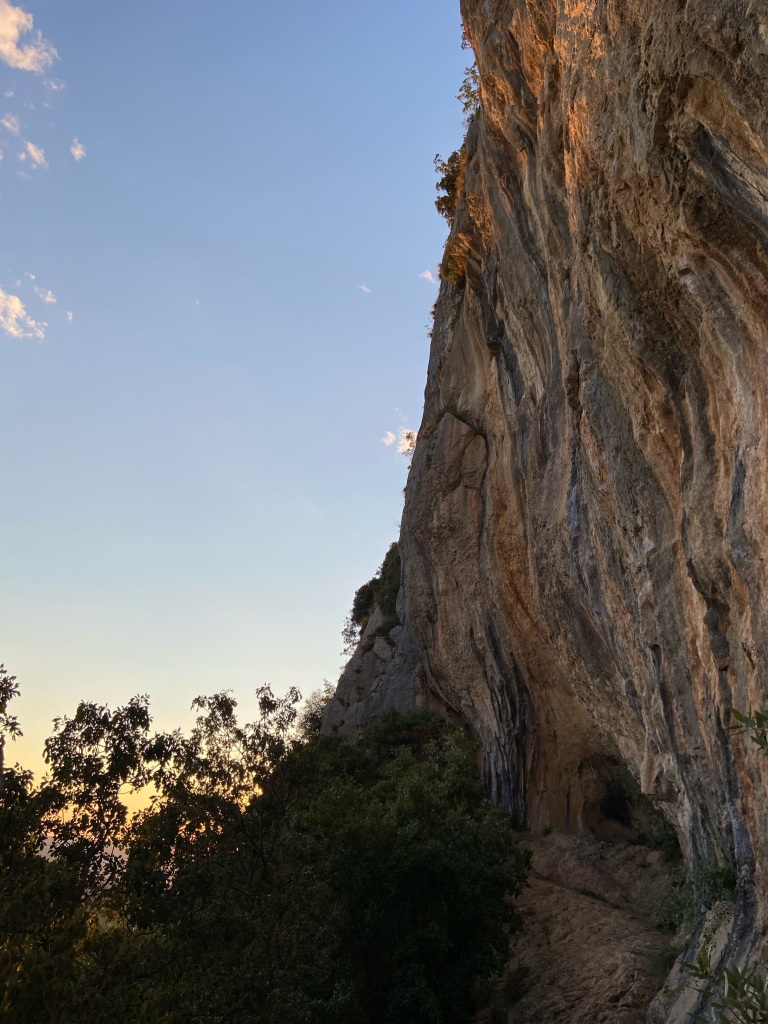
Kompanj is a stunning crag, set in a peaceful rural location. The crag has around 130 routes on great quality rock and quickly became one of our favourite areas in Istria. The routes vary enormously from steep eye catching tufas to old school technical wall climbs. Kompanj, like many Istrian crags, has a very mild climate. Climbing will be possible throughout winter, this area isn’t a good option in hot weather. This crag is best suited for people climbing from the high sixth grade all the way into the upper eighth grade. whilst there are some lower grade climbs here they aren’t as abundant or as high quality as the harder routes.

Kompanj is one of many crags in the general area of Buzet. This is a great area to be based as there are several other high quality crags such as Buzetski Kanjon and Kamena Vrata. Having all these venues in a small area makes Buzet almost feel like a destination in of itself, aside from the rest of Istria. Nestled in the hills away from the coast it is easy to forget where you are. Many other crags lie a short drive away, with equally good climbing opportunities. We enjoyed Istria a great deal, but preferred the climbing further south in Dalmatia.


Krk
Krk is the first island in the North of Croatia, connected to the mainland via a bridge. Krk has several crags as well as lots of beautiful coastline. Portafortuna is the best crag on Krk by some margin and is home to some truly excellent routes. whilst its not a big crag, with around 70 routes, everything we climbed there was good quality. The main buttress is a steep overhanging wall with long pumpy endurance climbs on generally good holds. just to the left on a smaller buttress are some very technical slab routes where the only thing that will get pumped is your calves.

Plitvice Lakes National Park
Not far from the border with Bosnia and Herzegovina lies what is probably Croatia’s biggest natural attraction, the Plitvice Lakes National Park. There are several different trails to explore the lower and upper falls, we walked trail K. Don’t be put off by the trail times as it claimed it would take 6-8 hours, but it only took us around 3 hours. We highly recommend arriving early as at the end, coming back to the car park it was very busy. We arrived as soon as the park opened and had the trail almost to ourselves which is much more enjoyable.

We thought the entrance fees were expensive and you also have to pay for parking on top of the ticket price. Make sure to visit in the parks off season to get the cheaper ticket prices. You can’t swim in this national park to preserve the cleanliness of the water. At Krka National Park, a similar waterfall and lake attraction, you are allowed to swim in and around the waterfalls. It is also paid entrance, however the overall size of the park is smaller than Plitvice. It isn’t worth visiting both and there are also lots of free waterfalls you can visit aside from these areas.
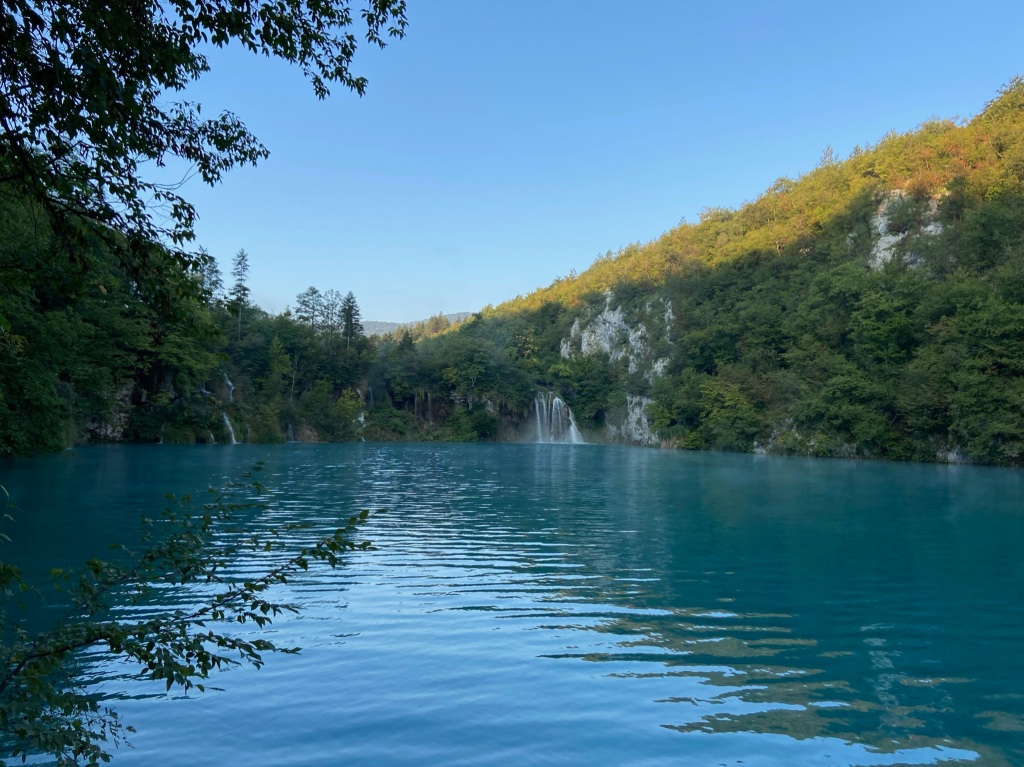
Pag
The island of Pag is a beautiful and interesting place to visit. We took the ferry from Prizna to žigljen and enjoyed making our way down the long, thin island. Pag is home to a handful of climbing routes, on an unusual pinnacle right by a beautiful pebble beach. The island is a very interesting environment and can be extremely windy. There is some interesting flora and fauna on the island, we found quite a lot of tumbleweed growing in amongst the rocky hillside. Whilst a charming area to visit, Pag wouldn’t be a good choice of location to be based for a long period of time.
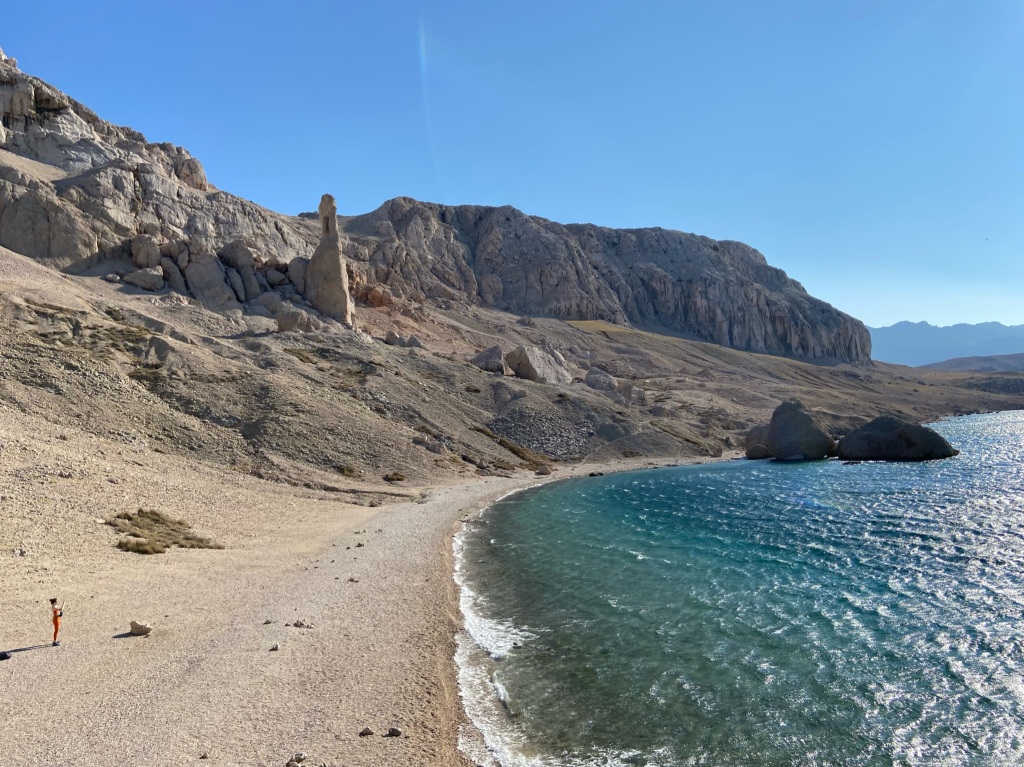
Outside of climbing and hiking, Pag is known as a popular party and festival destination and above all else cheese. Sirana Gligora is the islands most famous family cheese factory. They offer cheese tasting boards and factory tours, which is a great way to enjoy a relaxing afternoon after a swim in the sea. The factory also sells other local produce and has a restaurant situated in a beautiful building with panoramic view of Pag.

Paklenica
After Leaving the South end of the island of Pag you are only 50 km from the most well known climbing destination in Croatia. It has a lot of routes ranging from valley crag single pitches to longer multi pitch adventures. When we arrived we ran into a lot of trouble trying to pick up the specific guidebook for Paklenica (as it is not included in the general Croatia guidebook). It turns out that this guidebook is now out of print. We were told that you could still buy it at the tourist office in the national park but after a disappointing detour it turns out you can’t buy the book anywhere, at all! According to needlesports website, here, it appears that there is going to be a new edition out in Spring 2022. As such Paklenica was an omission from our trip. The good news is that there are loads of other great areas to choose from. One day we will return with the new guidebook and experience it for ourselves.
Split
We spent a few days exploring Split and the surrounding area before we caught the ferry to Hvar. Not far from the city centre are several deep water soloing venues. These areas are nothing special but offer many hours enjoyment. The crags aren’t particularly high and the sea was generally very deep so its a great venue for beginners to DWS. There are also several sport climbing sectors not far from Split that are worth seeking out if you are in the area. The port of Split is the largest passenger port in Croatia and is a brilliant place to catch a ferry to other parts of the Adriatic.
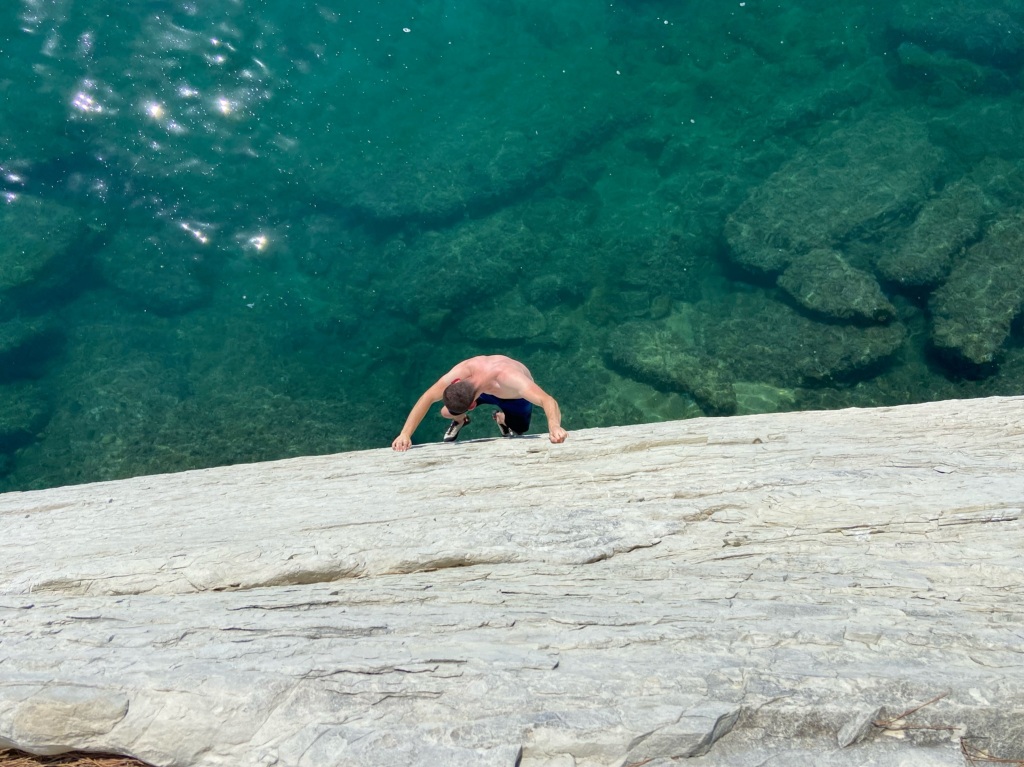
Island of Hvar
Hvar was one of the highlights of our time in Croatia. Boarding the ferry you catch a glimpse of islands in the distance and you can just tell it’s going to be great. There are several climbing locations on the island of Hvar, which are likely all great. However, we only climbed at Cliffbase as we couldn’t tear ourselves away.
Cliffbase, Sveta Nedilja
Sveta Nedilja is a beautiful, scenic town on the island of Hvar. A short walk or boat ride along the coast will bring you to a climbing area known as Cliffbase. Cliffbase, also known as Šuplja Stina, is a one stop shop for climbing at any time of the year on the island.
As this crag is on private land, a small fee must be payed to use the sport routes there, details can be found below. At first we were a little apprehensive as to whether it would be worth it. Coming from the UK paying for access is not something we are used to. After going we were pleasantly surprised and it was well worth the cost of entry.

There are around 150 bolted routes here, all of which are good, some of which are mega classic! There is a giant pinnacle which creates a canyon, with routes that are always in the shade. The rest of the crag faces south. There is a huge amount of quality deep water soloing here. The variety means it is possible to climb here at any time of year. Although as with many areas autumn is best, with the sun not too hot and the sea still warm from summer. The sea was incredibly warm, in late September it was around 25 degrees.

The routes are generally steep wall climbs, on good rock and most routes are at least thirty meters long. The location is very relaxing and a post climb snorkel will reward you with pristine sea and wildlife. All of the routes we did here were good and the sport climbing alone would be enough to entertain you for a while.
The Deep Water Soloing gives the crag that extra element of quality. There is the potential to climb a huge amount of routes and traverses at any grade. The sea is very deep and very clear, you can venture as high up the crag as you dare. While it is possible to rent kayaks and paddle boards from Cliffbase, the DWS can easily be done without a boat. Although the crag is steep, there are several areas you can achieve a no hands or sit down rest. Swim out with your gear in a dry bag and then, after climbing to a rest, you can set off bone dry.
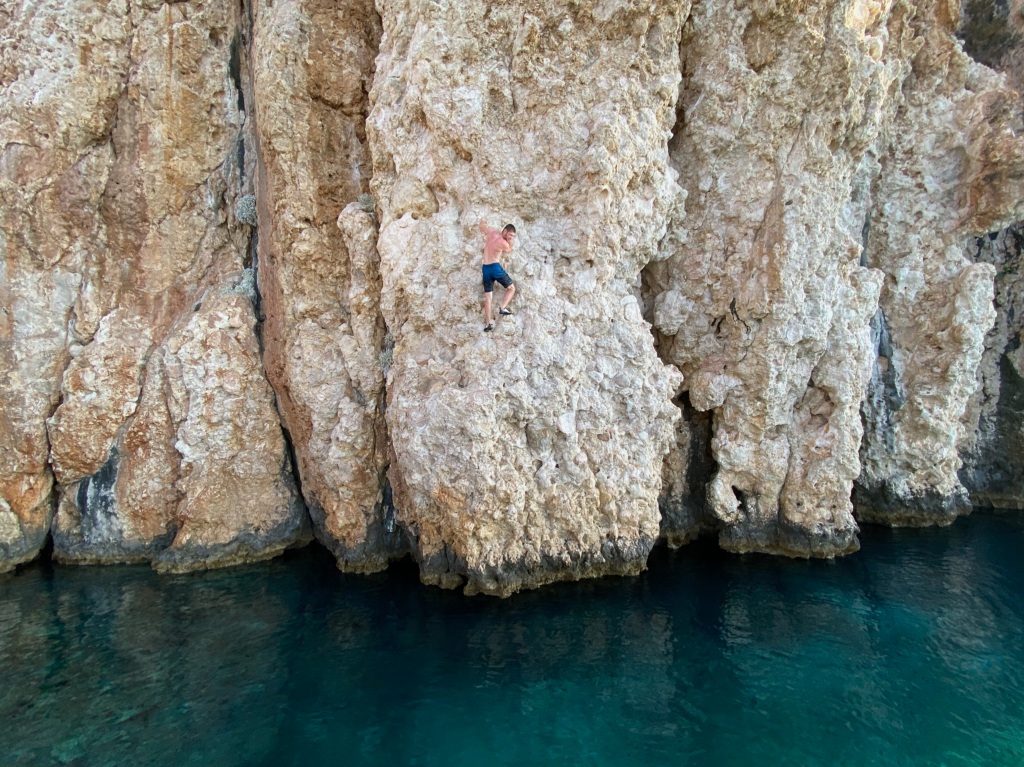
It is also possible to swim one hundred and fifty meters or so to the next bay along. Here you can do a long, mega fun traverse all the way back to Cliffbase. More and more rock extends into the distance for those willing to go the extra mile to get there. You can climb uninterrupted in complete solitude.

There is another crag up the hill from the village with more sport routes and some via Ferratas. There is accommodation available at Cliffbase, who also do wine tastings of their locally made wine, in a cave cellar by the sea.
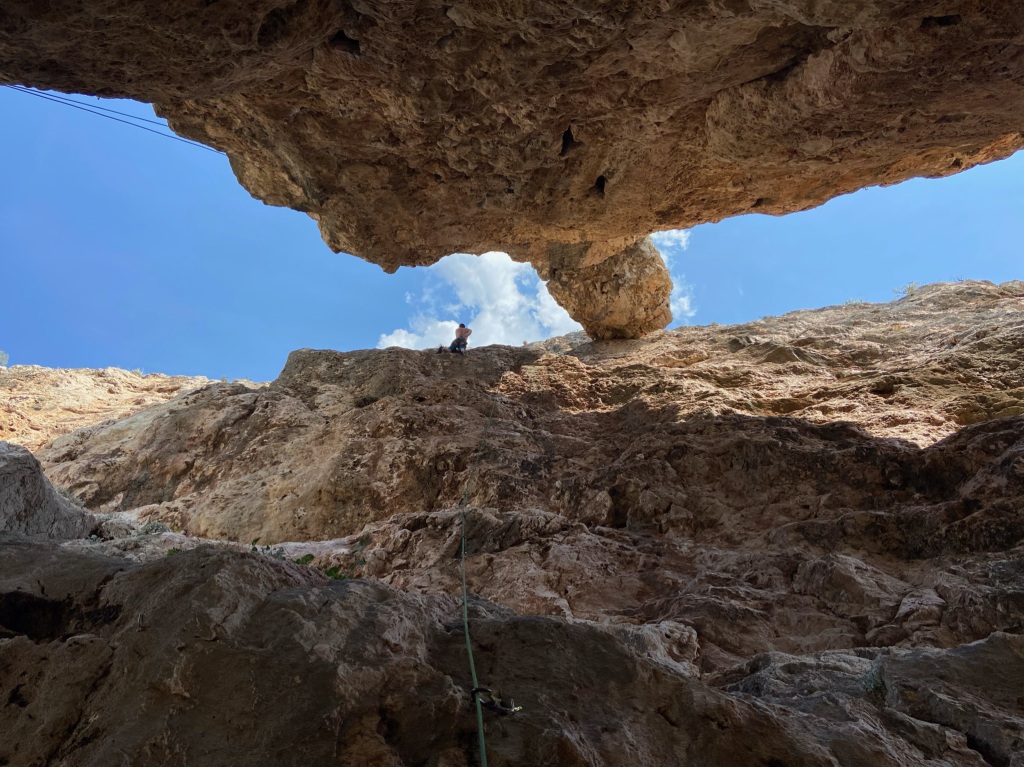
Ciovo
The Island of Ciovo is one of the biggest and best deep water soloing venues in Croatia, with around 110 routes and the potential for many many more. The only downside to Ciovo is that to make the best of what’s on offer you really need a boat. We did some exploring on the coast without a boat and still had a good time, but it was limiting. Even a paddle board would suffice and make the experience easier. With a combination of Bushwacking, scrambling and swimming we managed to find some of the climbing and see how amazing a venue Ciovo is. The cliffs here are big and of good quality rock. Although the island itself isn’t remote, the cliffs feel wild and almost untouched. Without a doubt we will return here again in the future, hopefully with a boat!

Omiš
25 km South of Split along the Croatian coast lies the bustling town of Omiš. The majority of the crags here are set back inland in a pleasant river canyon. Omiš is a popular climbing destination with lots of travelling climbers and busy crags. It wasn’t our favourite place in Croatia, but we enjoyed a few days climbing here. In comparison to other Croatian climbing areas, Omiš is ok but far from the star of the show. It is by no means a bad place, it just doesn’t reach the high bar set by other areas in the country. However, Omiš does have a lot of routes and the crags have extremely short approaches as they are right next to the road. This makes it a good stop off for anyone travelling down the Croatian coast to Bosnia & Herzegovina or down to Montenegro.

Inland
Northern and Eastern Croatia receives significantly less visitors than the coastal regions. There are several climbing areas and mountainous regions here which attract far less climbers than the coastal areas. However, the climbing in the Dalmatian region is ultimately the best in Croatia. This doesn’t mean that inland Croatia should be discounted, There are many beautiful places worth seeking out. Everything is much quieter and there is a slower, more relaxed pace of life. Our road trip took us into Bosnia & Herzegovina, visiting many different areas of the country, and then back into Croatia. A round trip this way allows you to visit loads of fantastic climbing areas, as well as checking out quieter parts of these countries and some nice cities. You can read our Bosnia and Herzegovina article here.
Summary
Croatia is an amazing country with a huge amount to offer to any climber or outdoor enthusiast. The landscape is stunning and the weather is stable throughout the year. Croatia is one of the most popular and most talked about tourist destinations in Europe for good reason. We visited many different areas and spent almost four weeks on our road trip and we only scratched the surface. We could have spent five times as long and still not run out of things to do.
The shape and size of the Croatia lends itself perfectly to a road trip. Things are never that far away as the country is relatively small. However the different parts of the country have very different landscapes and climates. Whether by car, bike or public transport anybody on a Croatian road trip is in for a treat.
For more articles about climbing in the Balkans, read our Balkans series here.
Relavent links and resources
Croatian guidebook
Cliffbase, Hvar
You really must go back to Paklenica which is a real sport climbing Mecca for people from all over Europe.
My wife and I have been 3 times, each for a week, and barely scratched the surface there.
Having not been for the last two years we hope to go again a the end of the season in 2022.
We also recommend Josip of Paklenica climbing gekko if you would like guiding up some of the more committed routes: https://m.facebook.com/ClimbingGekko/
LikeLiked by 1 person
Hi Phill, thanks for reading the article and for your comment. We would love any excuse to go back to Croatia so I’m sure we will visit Paklenica one day! I hope you manage to climb in Croatia this season 🇭🇷
LikeLike